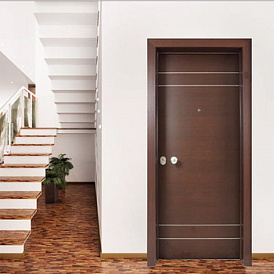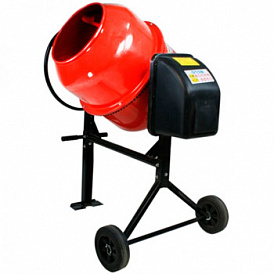How to choose a quality linoleum
The final stage of repair work in the room almost always becomes the installation of the floor covering. And about what type of preference should be given, opinions are divided. The tile is slippery and “cold” material, the laminate is mostly afraid of water, the parquet is expensive and impractical. After weighing the pros and cons, many opt for linoleum - synthetic flooring, featuring excellent performance, aesthetic appearance, resistance to the main sources of damage, as well as a very affordable price. All that remains to the buyer is to determine the specific characteristics and give a choice in favor of one or another model.
content
- The best companies for the production of linoleum
- The structure and application of linoleum
- Varieties of linoleum
- Linoleum selection parameters
- What linoleum choose?
- How much is linoleum?

The best companies for the production of linoleum
Good and high-quality models of linoleum are currently being produced by well-known European and American manufacturers. Recently, domestic producers have also “tightened up” - their products are almost as good as foreign counterparts. You can recommend to purchase linoleum, manufactured under the following brands:
-
Grabo
-
Tarkett
-
Armstrong
-
Forbo
Before you give your choice in favor of a particular model, it is useful to study the characteristics, as well as get acquainted with the reviews of real buyers who highlighted both positive and negative points.
The structure and application of linoleum

Linoleum is a soft multi-layered "sandwich", which has an elegant appearance, wear resistance and unpretentiousness in operation. The structure of almost any model of linoleum includes the following elements:
-
The soft substrate executed from textiles or the made foam polymer. Provides protection from moisture, sound insulation and is responsible for ductility;
-
The sealing layer of fiberglass, chilling structure and making it monolithic;
-
Basis for printing. It is applied to her drawing, as well as performed surface embossing;
-
Protective polymer coating to prevent abrasion of the structure during mechanical impact;
-
Laminating layer made of polyvinyl chloride, providing protection from external influence;
Linoleum is sold in rolls, which differ in both length and width, so you can pick up a practically solid, without joints, segment, designed for laying in a residential area or office.
Varieties of linoleum
"Natural" linoleum

Linoleum in the classic sense of this word is difficult to call this coating, however, it is very popular among fans of the whole "green" and "green." It is based on soft jute fabric, wood resins are used as a plasticizer, and dyeing is done using natural pigment dyes. The main advantage is exceptional environmental friendliness.
Virtues
-
Maximum environmental friendliness;
-
A variety of colors and shades;
-
Nice texture;
disadvantages
-
High price;
-
Afraid of wrinkles;
-
Mediocre durability;
Polyvinyl chloride linoleum (PVC)
Virtues
-
Maximum environmental friendliness;
-
A variety of colors and shades;
-
Nice texture;
disadvantages
-
High price;
-
Afraid of wrinkles;
-
Mediocre durability;

Ageless classics, invented for a very long time and still practically did not change the formulation of production. The above structure is fully observed in the production of this type of coating, providing excellent wear resistance, resistance to moisture, temperature, mechanical and abrasive effects. It features a decent appearance, and a variety of colors and colors makes it possible to choose a specific interior.
Virtues
-
High mechanical strength;
-
Practicality;
-
A variety of colors and models;
-
Wear resistance;
disadvantages
-
Deformed when exposed to high temperatures;
-
It tends to fade with time;
-
Not resistant to aggressive household chemicals;
Linoleum selection parameters
Purpose
-
The most popular common household linoleum. Its key features are not only an aesthetic appearance and durability, but also high noise insulation and moisture protection. This linoleum is made on a foam substrate and is perfect for everyday use. Of the minuses it should be noted low strength;
-
The complete opposite of the above class is commercial linoleum. This type of coating is used in a commercial space with heavy traffic, and therefore the main criterion is maximum strength. Even with intensive loads, he is able to maintain his appearance up to 15-20 years. The disadvantages are high rigidity and a fairly high price;
-
-
Semi-commercial linoleum is a cross between household and commercial linoleum. This type of coating has incorporated the strength and reliability of commercial coating and noise and vibration insulation of household linoleum. Perfectly is suitable both for office, and for household rooms with a small and average stream of visitors. The disadvantages include, perhaps, higher than in the case of ordinary household linoleum, cost.
Linoleum class
The parameter is closely related to the appointment and is responsible for the applicability of linoleum in certain conditions. It is denoted as two numbers, the first of which indicates the operating conditions, and the second indicates the degree of permissible mechanical load: the larger it is, the stronger the linoleum (1.2 or 3). So, models with the first digit 1 or 2 - a great option for domestic use. 3 or 4 - typically office or production linoleum.
Linoleum thickness
The thickness of linoleum has the most direct impact on durability, as well as on the insulating characteristics and protection from extraneous noise and vibration.
-
Linoleum with a thickness of 1 to 3 millimeters is considered typically domestic. It provides acceptable sound and vibration isolation and is distinguished by an aesthetic appearance. Among the disadvantages of this coating is a high tendency to receive damage due to mechanical impact;
-
4-6 mm thick coating is a middle ground and is suitable both for residential premises and for various offices with a small and medium flow of visitors;
-
-
Models 8–10 millimeters thick are the most durable and wear-resistant. As a rule, such models belong to the commercial class and provide maximum noise and vibration insulation, they are not afraid of mechanical impact and may well be placed in places with an intense flow of visitors. The disadvantages of this coating are high rigidity, high weight and, of course, high cost;
Drawing and texture
Here you will find the broadest flight of fancy.Wood and bamboo of various colors and shades, stone, marble and granite, all kinds of fancy patterns - the specifics of making laminate flooring makes it possible to get absolutely any texture and color!
Dimensions
Pay attention to, first of all, the width of linoleum. On sale you can find models of different widths - from 2.5 to 4 meters, each of which is perfect for the kitchen, bedroom and even the bathroom. The length can be absolutely any and depends only on the parameters of a particular room.
Application specifics
Despite the general manufacturing technology, there are quite specific models for sale in specific conditions. So, linoleum with an antistatic coating, which is not “hot” with current, is popular, among owners of private houses there is an increased demand for models suitable for operation with the “warm floor” system. And in those rooms where the probability of unintentional ignition is high, preference should be given to fire-resistant models. Those or other properties of linoleum are achieved by entering the appropriate components at the final stage of production.
What linoleum choose?

-
Living rooms, living rooms and all kinds of personal cabinets are not demanding on the characteristics of linoleum. Quality coverage of 21 classes will be more than enough;
-
Rooms prone to high humidity (kitchens, bathrooms, bathrooms) require the use of linoleum 23 or 24 class;
-
For laying in the bedroom or child preference should be given to linoleum grade 23-24, having a thickness of about 2.5-3 millimeters for maximum sound insulation;
How much is linoleum?
-
The simplest models of the 21-22 class have a cost of 200-400 rubles per square meter of coverage;
-
Coverage 23-24 class, designed for laying in the bedroom or nursery, more expensive - from 500 to 900 rubles per "square";
-
Wear-resistant linoleum 32-33 class, with increased mechanical strength, costs about 1000-1200 rubles per square meter;
-
Natural linoleum is considered the most expensive: its cost starts from 2 thousand rubles per square meter.
In the following articles, our experts tell how to choose the laminate and secrets the choice of screwdriver.
Attention! This material is the subjective opinion of the authors of the project and is not a guide to purchase.













